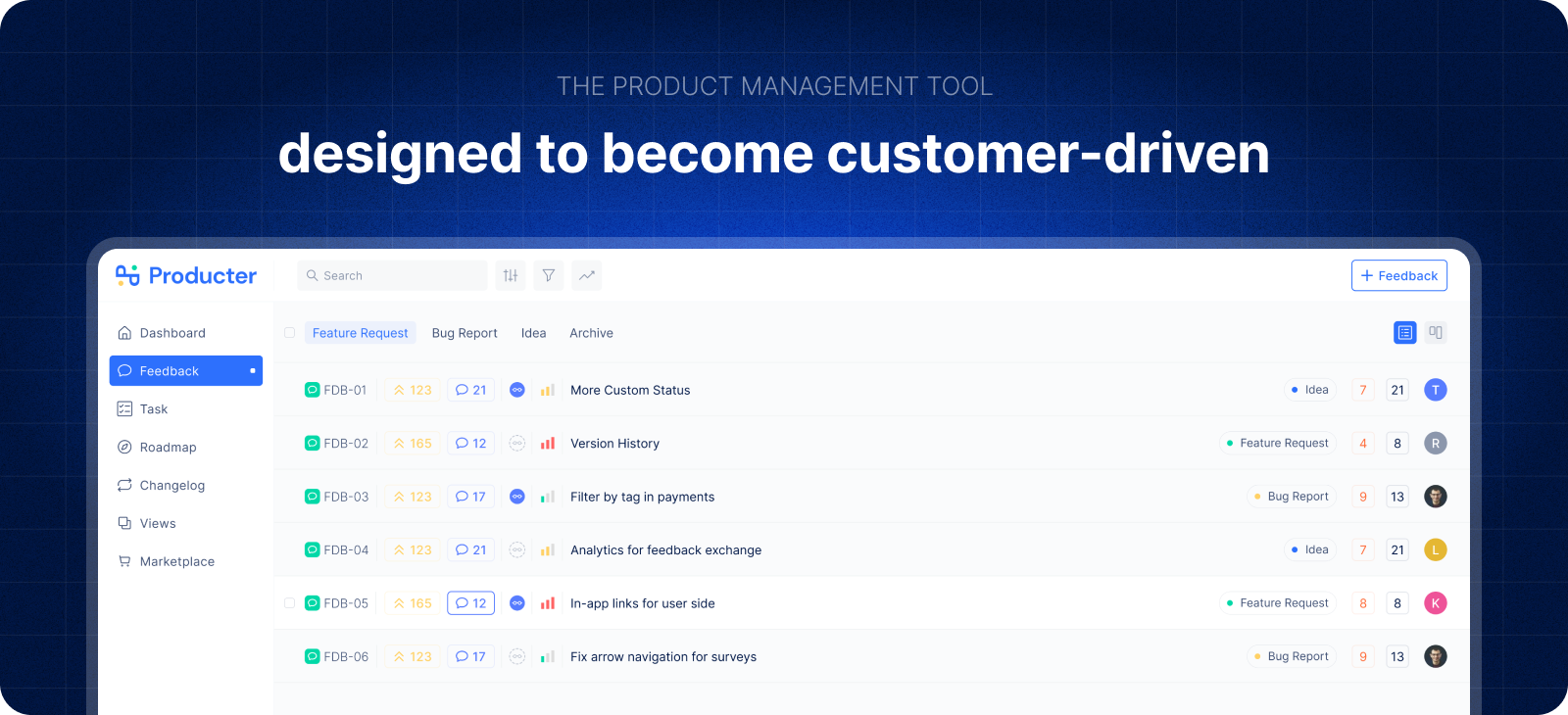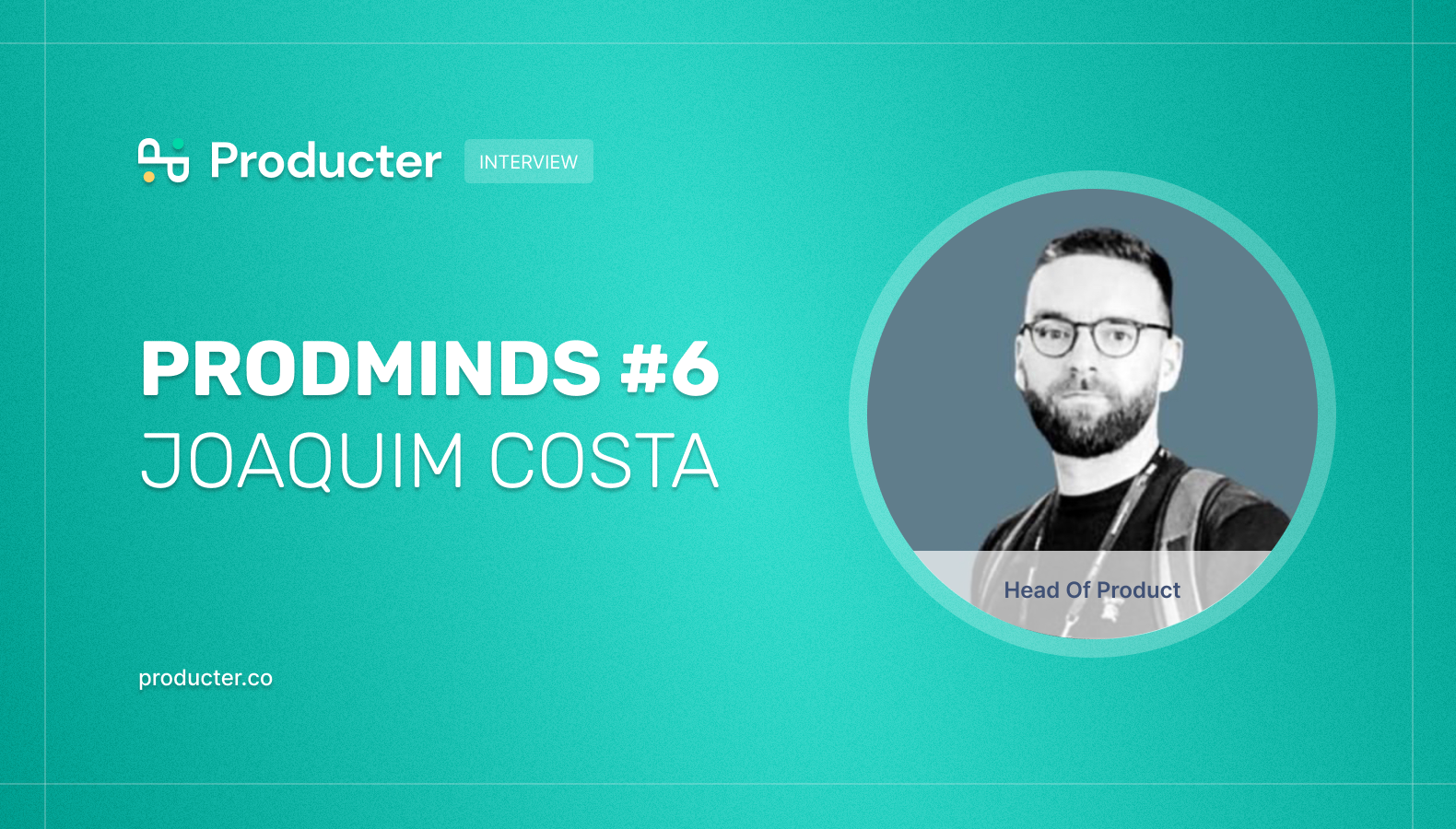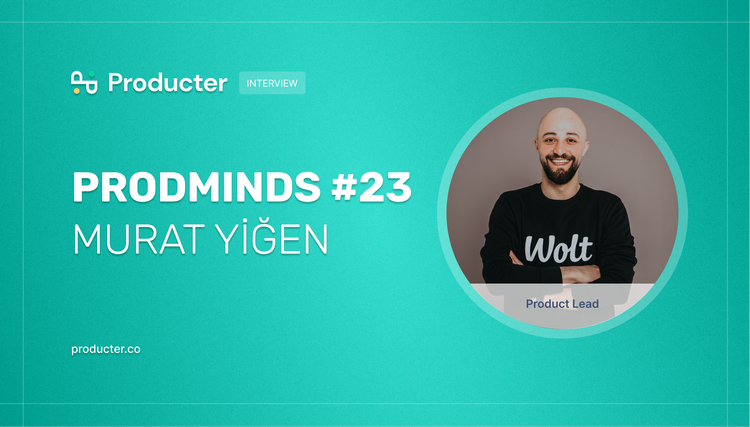ProdMinds is an interview series featuring product minds around the world.
Team Producter: Would you tell us a bit about you and your career path in product management?
Samuel: When I started building software, I didn’t know that there were multiple roles in teams. It might sound funny now, but I was under the impression that everybody just combined everything. As I moved from building my own iOS apps into more formal jobs, I learned about product management and was super attracted to it. Although I love technology and programming, I get the most energy from figuring out what problem we should solve and how. There’s something so energizing about figuring out a user problem and then solving it. I get a huge kick out of seeing people use the software my team and I work on. Shifting from engineering into product management came with a lot of challenges because I had to zoom out a lot, and shift my focus from the codebase to the product. But my technical background also helped me a lot in figuring out how we have to build something and having good discussions with my engineering partners.
Team Producter: Which part of being a Head of Product is the most challenging for you?
Samuel: It’s prioritizing what I spend my time on. Being part of a fast-growing startup, there are always so many things happening at the same time, that I need to decide where I can contribute the most. There’s an easy trap to fall into; doing just reactive work, meaning responding to everyone’s e-mails, taking every meeting, etcetera. Some of the most valuable things I can do is look ahead and paint the picture for people.
Team Producter: How do you think departmental silos affect product companies? In what ways do you build and maintain relationships with stakeholders from different teams?
Samuel: I think good products are a result of the entire company working super well together. From support, to hr, to sales, everybody contributes. This isn’t easy: Stakeholder management is hard, and it’s more an art than a science. I spend loads of time with people from other departments and try to keep them as informed as possible. Being honest, and sometimes a little blunt is key here. One thing I’ve learned is that when there’s a conflict of interest, it’s much better to call it out immediately than to talk around it.
Team Producter: When it comes to listening to your users, what’s your method? Is their input considered in critical product decisions?
Samuel: Most of our ideas come from listening to our users, but in multiple ways: First and foremost, we talk to them all the time. Every PM or designer in my team talks to users at least once a week. This means that everyone has a fairly strong idea of who our users are. It’s kind of a muscle we have to train.
On top of this, we often do specific research. For example, right now we’re looking into our mobile strategy, and we can’t do that without speaking to users a lot. We’re doing a lot of interviews with our users about their use of mobile in their workflow, but also with people that don’t use us yet, to battle selection bias.
Team Producter: Where do you think product managers with an entrepreneurial mindset make the greatest contribution to the product?
Samuel: Wearing many hats. As a PM, you’re end-responsible for the success of the product. Often that means researching user problems and designing & shipping solutions. But sometimes it might mean that you have to negotiate a deal with a partner, hire someone, or do a crazy presentation for a client. Product Managers with an entrepreneurial mindset are more likely to do these things, and come up with them, by thinking outside of the box.
As a product person, engineer and entrepreneur, how do you onboard new users and drive adoption based on different products? Which aspects do you think are the most crucial?
On boarding to me is about two things:
Firstly, it’s making the path to value as short as possible. Make sure that anyone will see why your product is valuable in minutes. At VEED this means we need to get people to upload a video as fast as possible. We don’t even ask people to register before they do this, so they can experience the value of our platform in no time.
Secondly, it’s about maintaining high psych. “Psych” is the users’ energy, it goes up when they experience value and it goes down if they have to learn something, take action, or wait. We need to make sure that people remain enthusiastic and energetic during the process, and won’t lose all the energy filling in long forms, or waiting for things to load, so when we look at our onboarding, I’m always interested in which things increase and decrease their psych.
Producter is a product management tool designed to become customer-driven.
It helps you create collect feedback, manage tasks, sharing product updates, creating product docs, and tracking roadmap.

You may also like:








